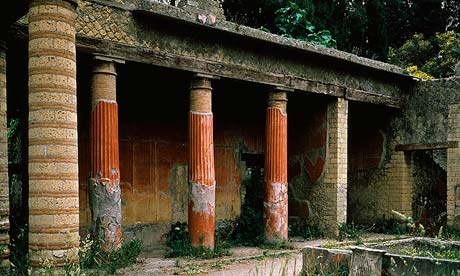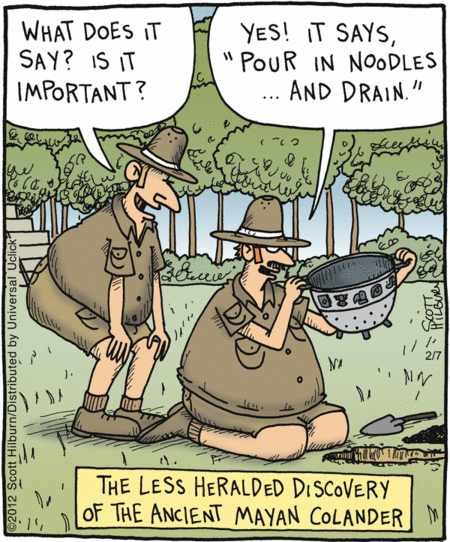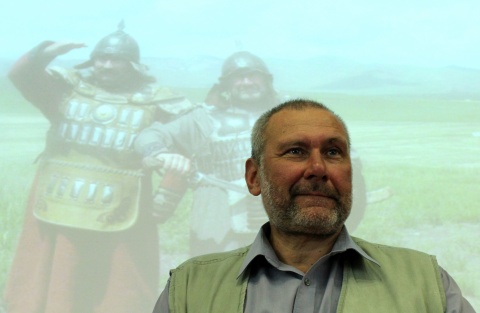Augustus was the Roman Empires’ first emperor and was the grandnephew of Julius Caesar and adopted son. Augustus went by the name “Octavian” and he brought an end to civil war and appeared to be restoring the republic, but in actuality, he ruled as an autocrat. He was credited as heralding the
start of the Roman Empire, which would last for over four centuries. Augustus transformed Rome stating, “He found a city of bricks and left it a city of marble”. During his rule, we saw the creation of a new order, a powerful new army, a new social order and reforms, and many literary accomplishments.
In 27 BC, the senate gave him the imperial title “Augustus” and he used this position to not only create a new order, but to reform the army. Augustus created a new constitutional order, which consisted of the preceps (Augustus) and the senate. The senate now had the ability to affect the law, but not without prior consent of the preceps. In actuality the preceps had little power, but up until 23 BC, Augustus had also held the position of consul, which gave him imperium. After Augustus gave up the consulship in 23 BC, he was given maius imperium, so his position of consulship was unnecessary. Augustus’ authority insured that the senate would always be filled with officials who supported him. Augustus was well liked and highly respected. Tacitus commented, “Indeed, he attracted everybody’s goodwill by the enjoyable gift of peace…Opposition did not exist”
1 . The civil unrest was waning and Augustus was growing even more powerful, yet the crucial source of his power was the new army he created.
The Roman Army
The command of the Roman army during Caesar’s rule was an executive political office therefore its undertaking could be risky business for unscrupulous generals. Only six months after the tyrannical Caesar was murdered, Augustus sought friendly relations with his generals and friends. The Roman army was a source of upward mobility for the provinces, since the army’s purpose was also to maintain domestic order within them.
Colonies of veterans were created under Augustus, which would prove especially valuable in Romanizing the provinces. Augustus’ army maintained a standing army of twenty-eight legions. Those legionaries served twenty years and were primarily recruited from the citizenry in Italy. There was also a large contingent of auxiliary forces, serving as light infantry and cavalry. The auxiliaries during Augustus numbered close to 130,000 and they were primarily non-citizens. They served twenty-four years and they received citizenship after their term of service.
Augustus also established the Praetorian Guard. The Praetorian Guard consisted of nine thousand men and they had the main responsibility of protecting the preceps. They were recruited from Roman citizens in Italy and served for sixteen years. The Praetorian Guard would eventually play a pivotal role in making and disposing of emperors. The preceps’ relationship with the Praetorian Guard gave rise to a new distinction. When the preceps was victorious in battle, his troops bestowed on him the title imperator.
Although the army had a hand in domestic negotiations in the provinces, it was now the job of the provincial governors. The deputies were assigned by the preceps and known as legates. The legates were from the senatorial class and held office until the emperor chose to allow them. Although a dual system of provincial administration seems to have been created, in reality the greater proconsular imperium that had been granted to Augustus essentially gave him the power to overrule the senatorial governors and thus to establish a unified imperial policy
2 .
Adding Territories
All provincial governors received salaries, cutting down on extortion, which had characterized the Late Republic. Augustus’ new policy allowed for a certain amount of autonomy in the cities. City councils allowed leading citizens to maintain a stable government and they were often rewarded for their successes. Military campaigns were also utilized to consolidate natural boundaries of the Roman Empire and increase revenues, thus leading to the
increased size of the Roman Empire overall.
Augustus added more Roman territory to the empire than any other Roman. Augustus encouraged client kingdoms in the east, thus allowing him to use his army elsewhere. In 19 BC, after the pacification of Spain, Augustus conquered the maritime and central Alps and then expanded control over the Balkans up the Danube River. Augustus was essentially opening the doors to Germany. Around AD 6, the Romans advanced between the Elbe and Danube, but they ran into some difficulties. In AD 9, three legions under Varus were massacred by a coalition of
German tribes led by Arminius. The defeat made Augustus realize that Rome’s power was limited and she should maintain her present borders, instead of expanding.
The Social Order
The social order was also altered under Augustus. One needed to possess property worth one million sesterces to belong to the senatorial order. When Augustus took charge, the senate had over a thousand members. Augustus reduced its size to six hundred but also added new men from wealthy families throughout Italy. Overall, Augustus was successful in winning the support of the senatorial class for his new order.
Equestrians were also given a share of power in the new imperial state. All Roman citizens of good standing who possessed property valued at 400,000 sesterces could now hold military and governmental offices. Citizens not of the senatorial or equestrian orders were provided with free grain and public spectacles to keep them from creating disturbances. By gaining wealth and serving as lower officers in the Roman legions, it was sometimes possible for them to advance to the equestrian order.
Public Reforms
Augustus instigated many reforms while in power. He believed that public religion had been in civil disarray since the 1st century, so he decided to restore traditional priesthoods that had fallen into disuse in the Late Republic, rebuilt many ruined temples and shrines, and constructed new ones to honor the Roman gods. Augustus also instituted
a new religious cult that would serve to strengthen the Roman Empire.
Augustus promised that he would interfere with the workings in the senate, but he was driven for justice and he wanted to resurrect Rome to the glory it once was. He never considered himself to be a god, but he did permit the construction of temples to his deified adoptive father, Julius Caesar. Augustus also permitted the buildings of temples to Augustus and Roma.
Augustus also believed that the center of Rome was corrupt and that increased wealth had undermined Roman simplicity. These lack of morals led to an increase in divorce, a falling birthrate among the upper classes, and lax behavior manifested in hedonistic parties and the love affairs of prominent Romans with fashionable women and elegant boys
3. Augustus looked to restore piouty in the Roman people, so he also made adultery a criminal offense. He revised tax laws and penalized unmarried men, widowers, and married couples who had fewer than three children.
Literature
The high point of Latin literature was also reached in the time of Augustus. The most distinguished poet of the Augustan Age was Virgil, who welcomed Augustus’ rule, and wrote his greatest work
The Aeneid, in the emperor's honor. Horace, another prominent literary figure during the Augustan age, wrote the
Satires, a combination of poems on a variety of subjects. Additionally, paying homage to Greek culture and literature, which flowed quite deeply throughout the city, Horace used the imaginary letter in verse-to provide a portrait of his friends and society and the things he held most dear: a simple life, good friends, and his beloved countryside.
Ovid was a youth who often ridiculed Roman values. His most notable work was the Metamorphoses, but it was
The Art of Love, which pushed the boundaries of upper class Roman sexual morals. Augustus was not pleased, and Ovid ignored the wishes of Augustus to resist the urge to write such trifles. He paid a price for it in AD 8 when he was exiled for supposedly having sexual relations with the emperor’s daughter.
The most famous Latin prose work, written during Augustus, was by the historian Livy. Livy's masterpiece was a history of Rome from the foundation of the city to 9 BC written in 142 books. Livy's History of Rome celebrated Rome's greatness. He built scene upon scene that not only revealed the character of the chief figures but also demonstrated the virtues that had made Rome great. He also composed dome scathing work called the
Rape of Lucretia.
The Age of Augustus saw the beginnings of the Roman Empire along with
grand feats of architecture and a systematic principle for justification applicable to all people and their rights as citizens. The army continued to evolve in the Roman Empire as new emperors with effective leadership and organizational skills adopted new reforms, key to the success of the army and the empire. When Augustus finally died in AD 14, he left an order, which was so highly regarded and respected that few Romans looked for an alternative. Indeed, as the Roman historian Tacitus pointed out, "Actium had been won before the younger men were born. Even most of the older generation had come into a world of civil wars. Practically no one had ever seen truly Republican government.... Political equality was a thing of the past; all eyes watched for imperial commands”
4.
Sources
- Spielvogel, Jackson J, Western Civilization. 7th Edition, (Belmonst: Thomson Higher Education, 2009).
- Ibid, p 109.
- Ibid, p 152.
- Colin M Wells, The Roman Empire, (Cambridge: Harvard University Press, 1995), 30





 Find out what archaeology news and articles visitors are sharing every week on Ancient Digger by visiting every Sunday morning. Grab a cup of espresso or tea and settle in.
Find out what archaeology news and articles visitors are sharing every week on Ancient Digger by visiting every Sunday morning. Grab a cup of espresso or tea and settle in.








 Find out what archaeology news and articles visitors are sharing every week on Ancient Digger by visiting every Sunday morning. Grab a cup of espresso or tea and settle in.
Find out what archaeology news and articles visitors are sharing every week on Ancient Digger by visiting every Sunday morning. Grab a cup of espresso or tea and settle in.










 Find out what archaeology news and articles visitors are sharing every week on Ancient Digger by visiting every Sunday morning. Grab a cup of espresso or tea and settle in, there are some spicy stories this week if you missed them a few weeks ago.
Find out what archaeology news and articles visitors are sharing every week on Ancient Digger by visiting every Sunday morning. Grab a cup of espresso or tea and settle in, there are some spicy stories this week if you missed them a few weeks ago.





















